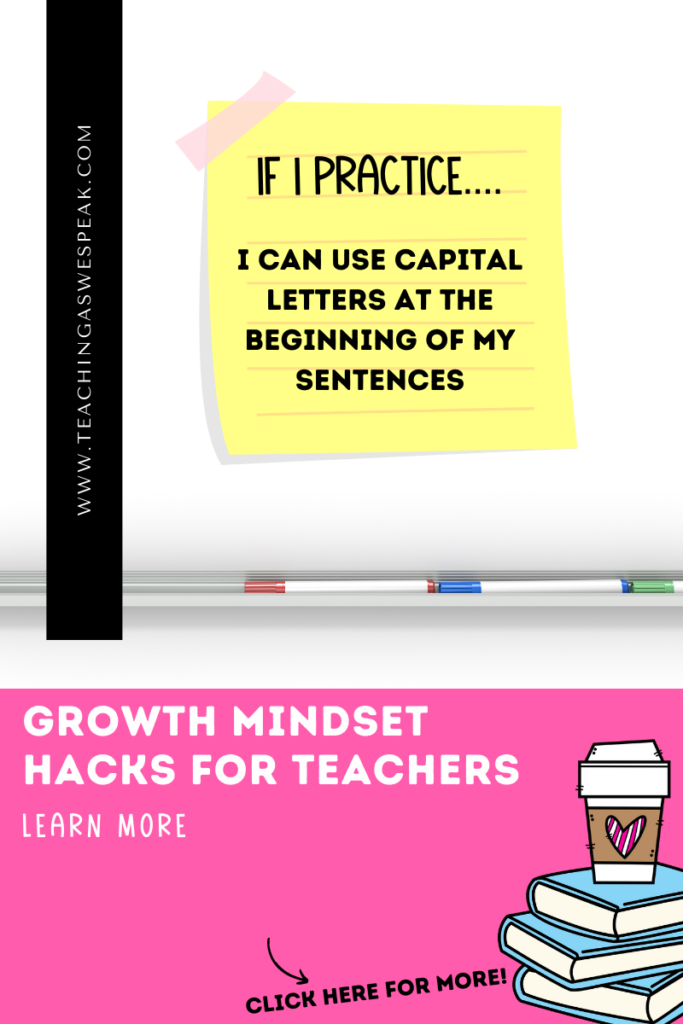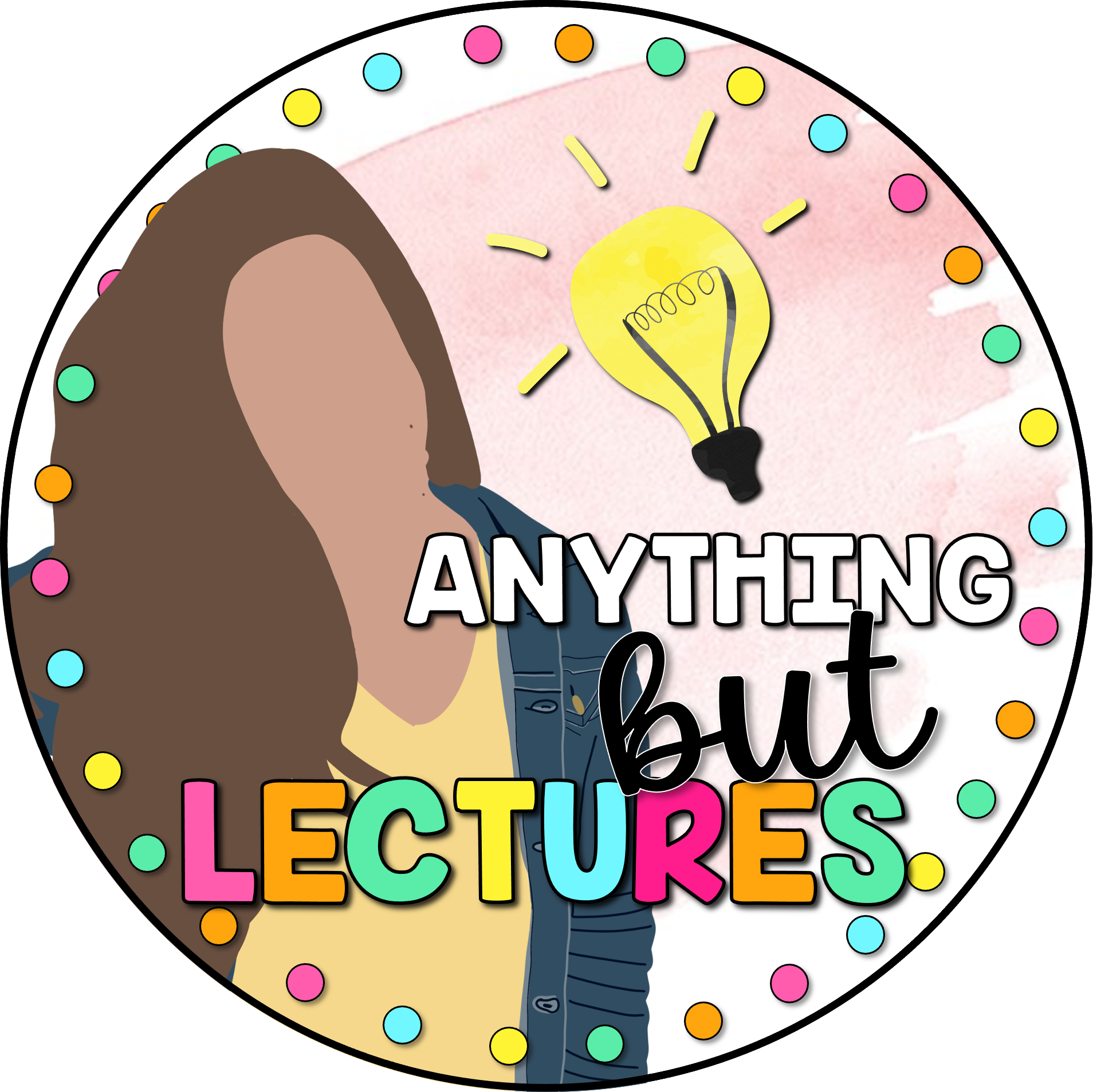Wondering what a growth mindset-centred classroom looks like? I’m sharing 5 ideas for simple inclusions to any elementary ELA classroom. I suggest starting simple and choosing one to include in your classroom and routines!
Want to know more about strategies to include soft skills like growth mindset and empathy in your classroom? Download the free Soft Skills Guide for Teachers now! Click here to get the free download!
Want to try a growth mindset project with students? Click here to download this great resource for free!
1. What Growth Mindset “I Can” Statements Look Like
Are you posting “I can” statements in your classroom for students already? Awesome! Add a simple poster or paper that reads “If I practice” or “When I practice” on top of where you post the I can statements.

You will be amazed what adding a few simple words can do to your students’ mindsets!
2. Interactive Poster
I saw this video on Instagram and absolutely loved the idea. The video shows Spanx founder Sara Blakely talking about her childhood and something her father always asked her. Every night, he would ask her “what did you fail at today?”
I like this idea so much because it encourages students to try new things. If students don’t fail at things, it means they aren’t experimenting and challenging themselves.
So idea number 2 is to turn this idea into a classroom poster!
Simply create a poster and write “What Did You Fail At Today?” ( or “This Week”). At the end of the day, give each student a post-it and have them answer the question, then post it on the poster.
You can make this a digital poster by using Google Slides, Nearpod or Jamboard and have students post their answers on their own devices.
3. Brain Dump Journals
Before sending students off to work (whether it be individually or in groups) give students 5 minutes to brain dump all of their ideas, thoughts, and questions about the task in a dedicated brain dump journal.
Students may feel that they aren’t good enough, or smart enough to complete a task. But if they start writing down ideas, they will slowly develop confidence when they see they know more than they previously thought.
The truth is, it doesn’t even matter if these ideas aren’t good. It’s the habit of getting ideas down that will help students realize they know more than they thought. Students can use these ideas as a springboard to draft their piece of writing.
4. Create a “Phone a Friend Corner”
Acknowledging that we don’t all have the answers is an important part of developing a growth mindset. Moreover, reaching out and asking for help is a brave act that we should be encouraging our students. That’s why I love the idea of a “Phone a Friend Corner”. This is a space in the classroom where students can have a friend help them if they are struggling. Make this space special by adding cushions or chairs to sit on. Post the rules for the corner somewhere that students can see.
5. Goal-focused classroom
Do you help your students set goals? Setting goals is a crucial part of growing a growth mindset because it helps students visualize where they want to go. Once you have helped your students set these goals, find ways to adapt the classroom environment to these goals.
Check out these reading goal bookmarks that would be a great addition to the classroom!
Final Thoughts on What Growth Mindset Looks Like
You definitely don’t need all of these strategies in order to be successful in teaching a growth mindset. As long as the ideas around a growth mindset are on your mind while you organize and design your classroom, you are on the right track!
What growth mindset hacks do you plan on trying? Comment down below!
Don’t forget to grab the free Soft Skills Guide for Elementary Teachers. Click here to grab it now!
Before you go, be sure to check out these related blog posts:
5 of the Best Test-Taking Strategies for Elementary Students
What Are the Study Habits I Should Be Teaching My Elementary Students?




